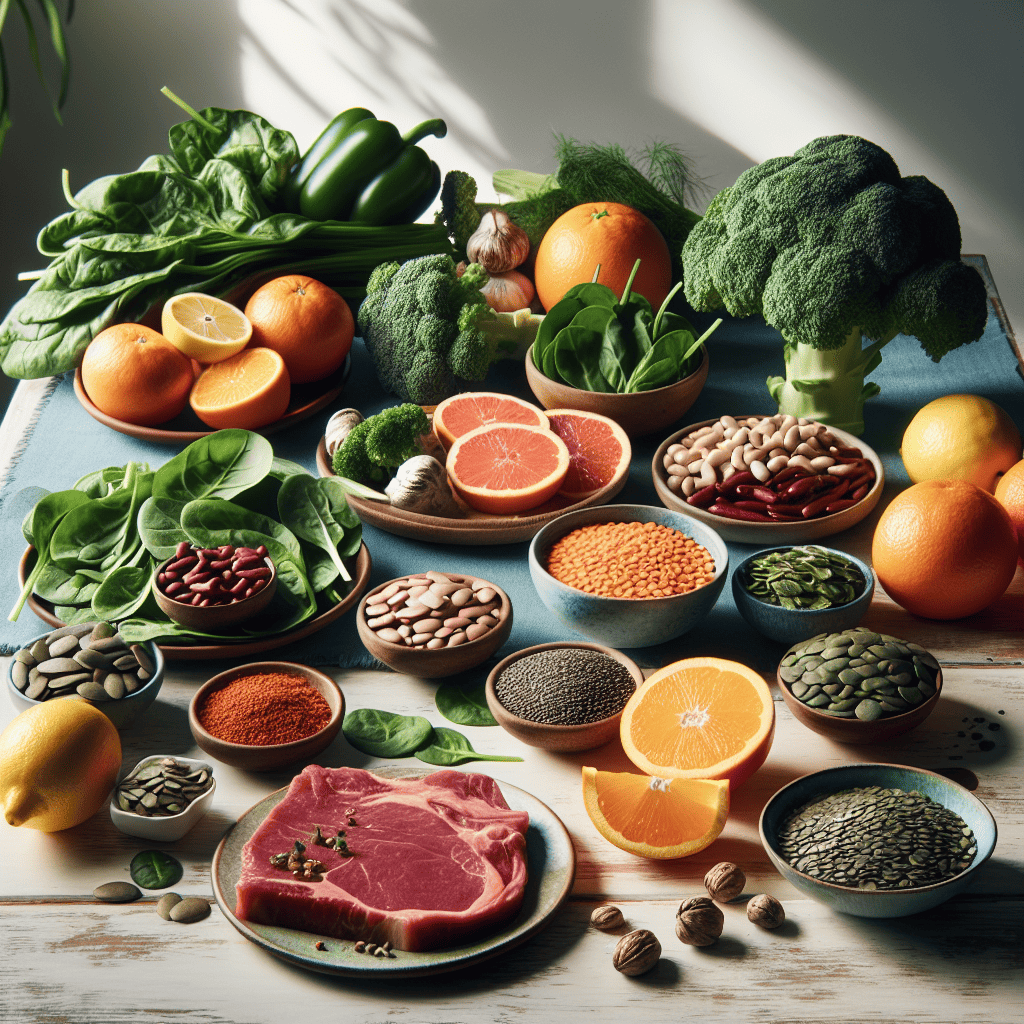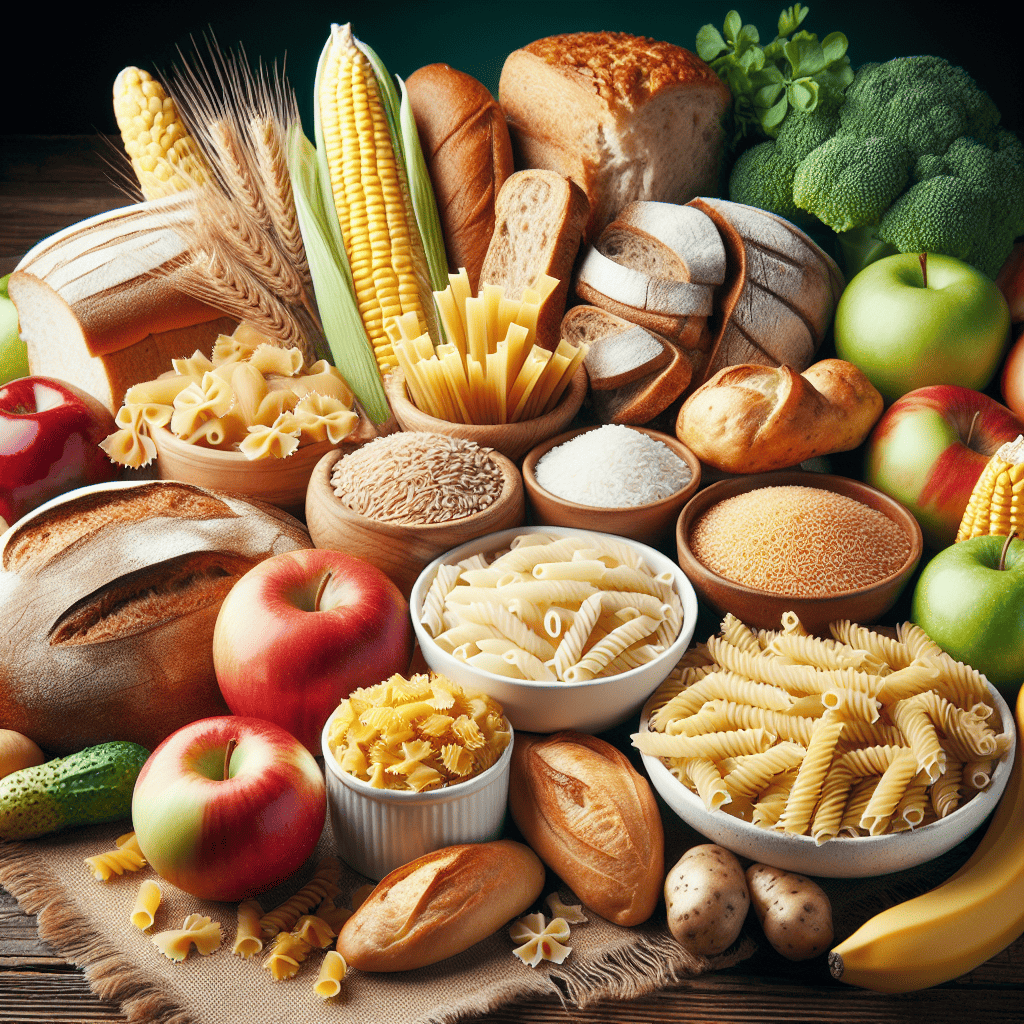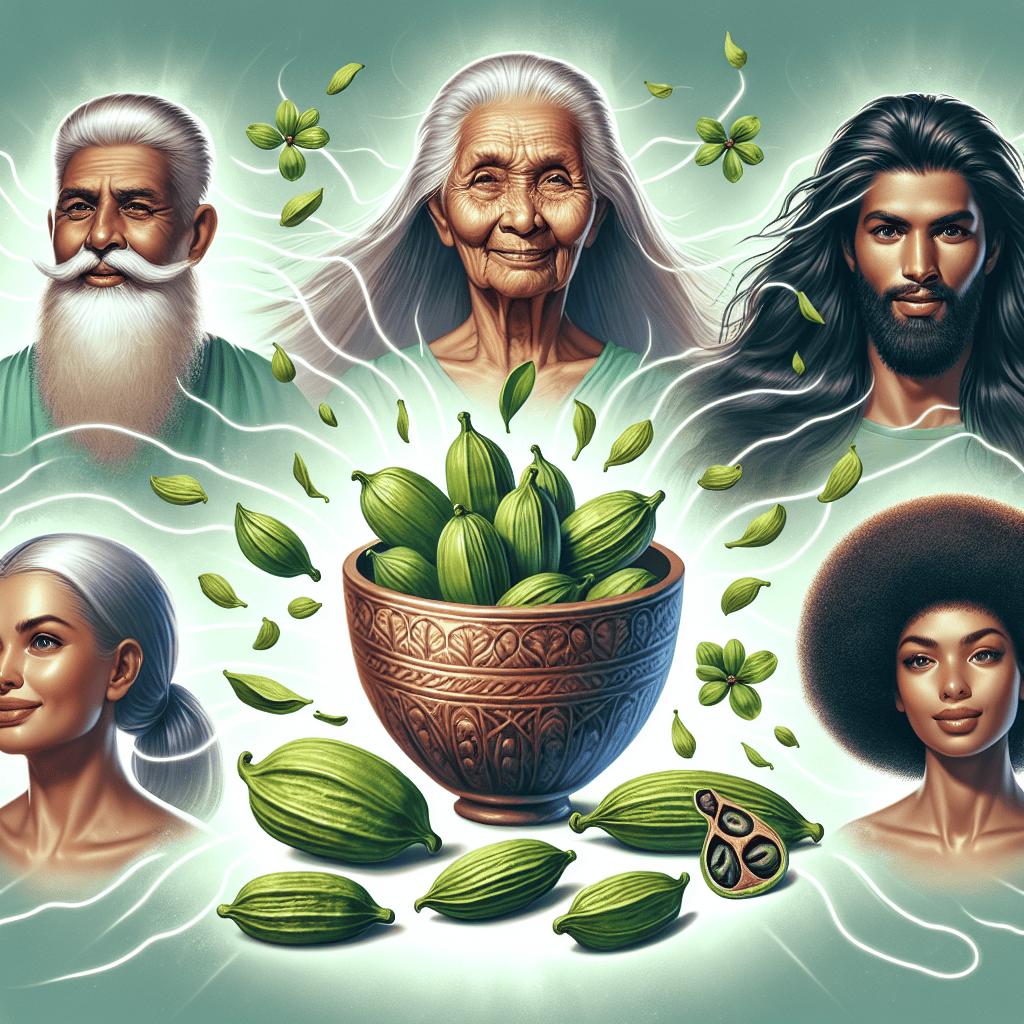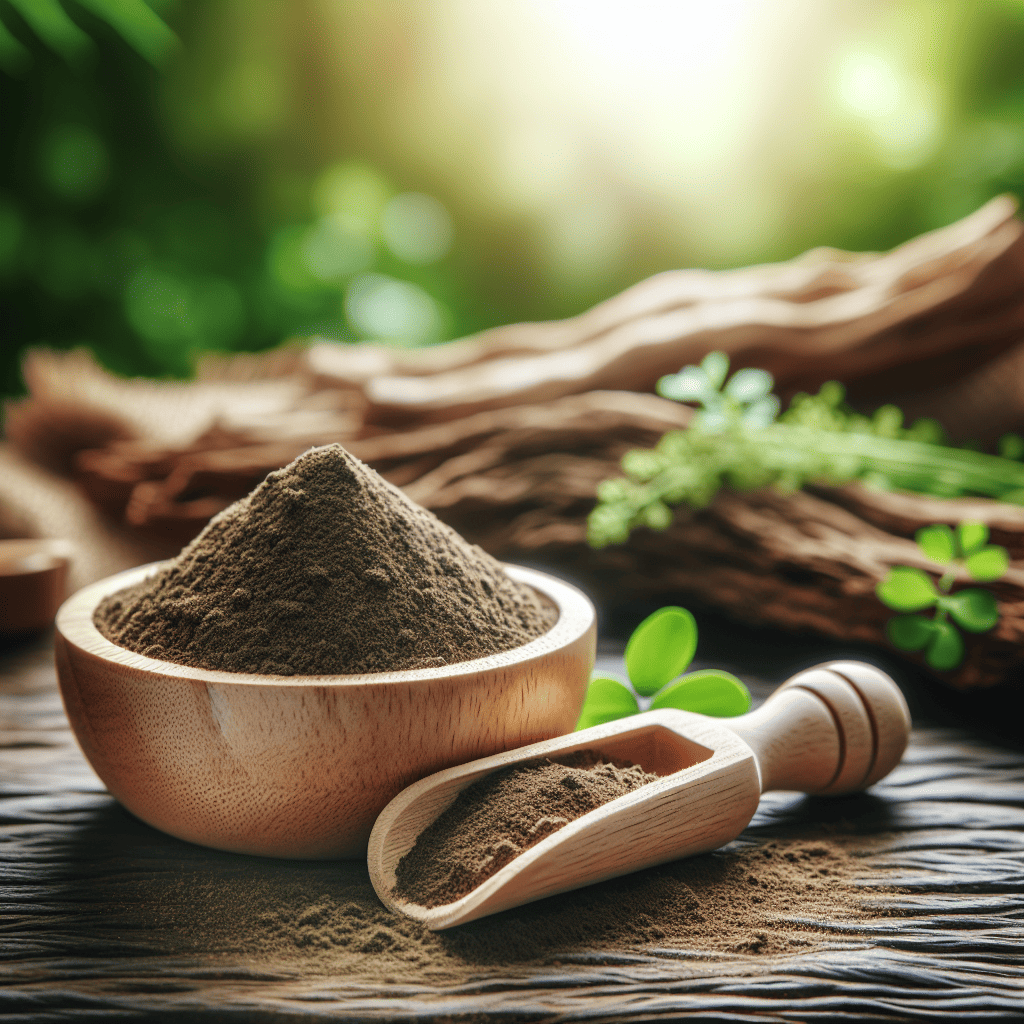Introduction: Iron and vitamin C are crucial for maintaining optimal health. In this comprehensive guide, we explore the importance of these nutrients and how they work together to support overall well-being.
Table of Contents
Importance of Iron
Iron is indispensable for the body’s functioning, particularly in oxygen transport and red blood cell production.
- Sources of Iron:
Iron is a crucial mineral that plays a vital role in various bodily functions, such as oxygen transport and energy production. Heme iron, found in animal products like red meat, poultry, and fish, is easily absorbed by the body compared to non-heme iron found in plant-based sources like beans, lentils, and fortified cereals. Despite the difference in absorption rates, both heme and non-heme iron are important for maintaining healthy iron levels in the body.
Iron deficiency is a common nutritional problem worldwide, affecting millions of people, particularly women of childbearing age and children. Symptoms of iron deficiency can range from mild fatigue and weakness to more severe conditions such as anemia. Consuming a balanced diet that includes a variety of iron-rich foods is crucial for preventing iron deficiency. For individuals who follow a vegetarian or vegan diet, it is important to pay extra attention to incorporating iron-rich plant-based foods and combining them with vitamin C-rich foods to enhance iron absorption.
Aside from food sources, iron supplements may be recommended for individuals who are unable to meet their daily iron requirements through diet alone. It is important to consult a healthcare provider before starting any supplements to determine the appropriate dosage and to monitor for any potential side effects. Regular blood tests can also help determine iron levels in the body and guide further dietary or supplementation interventions if needed. By incorporating a well-balanced diet rich in iron and practicing healthy eating habits, individuals can maintain optimal iron levels and support their overall health and well-being.
- Impacts of Iron Deficiency:
Iron is an essential mineral that plays a critical role in various bodily functions. It is a key component of hemoglobin, a protein in red blood cells that carries oxygen from the lungs to the rest of the body. Without enough iron, the body cannot produce an adequate amount of healthy red blood cells, leading to a condition called iron deficiency anemia. This condition can result in symptoms such as fatigue, weakness, dizziness, and even shortness of breath. Therefore, maintaining an optimal iron intake is crucial for sustaining energy levels and overall well-being.
There are two forms of dietary iron: heme iron and non-heme iron. Heme iron is found in animal-based foods such as meat, poultry, and fish, and is more easily absorbed by the body. Non-heme iron, on the other hand, is found in plant-based foods like beans, lentils, and spinach, but is not as readily absorbed. To enhance the absorption of non-heme iron, it is recommended to consume vitamin C-rich foods alongside iron-rich plant sources. This can include pairing spinach in a salad with citrus fruits or squeezing lemon juice over beans or lentils.
Aside from fatigue and weakness, iron deficiency can lead to more serious health complications if left untreated. Chronic iron deficiency anemia can impair cognitive function, weaken the immune system, and affect physical performance. It is important for individuals, especially vegetarians, vegans, and women of childbearing age, to be mindful of their iron intake and consider incorporating iron-rich foods or supplements into their diet. Consulting with a healthcare provider or a registered dietitian can help determine the right approach to maintaining optimal iron levels and overall health.
Vitamin C and Its Role
Vitamin C acts as a potent antioxidant that supports tissue growth, repair, and iron absorption.
- Sources of Vitamin C:
Vitamin C, also known as ascorbic acid, is a water-soluble vitamin found in many fruits and vegetables. It is a powerful antioxidant that helps protect cells from damage, aids in the absorption of iron from plant-based foods, and is crucial for the formation of collagen, a protein necessary for healthy skin, bones, and connective tissues. Besides its role in collagen synthesis, vitamin C also plays a vital part in boosting the immune system by supporting the production and function of white blood cells, which help protect the body against infections and illnesses. Some of the best sources of vitamin C include citrus fruits like oranges, lemons, and grapefruits, as well as berries, kiwi, bell peppers, and leafy greens like spinach and kale.
Incorporating vitamin C-rich foods into your daily diet can provide numerous health benefits beyond just supporting the immune system. Vitamin C is also believed to have anti-inflammatory properties and may help reduce the risk of chronic diseases such as heart disease, high blood pressure, and certain types of cancer. Additionally, adequate intake of vitamin C is essential for the body’s natural healing process, making it beneficial for wound repair and tissue regeneration. The recommended daily intake of vitamin C varies depending on age, sex, and life stage but generally ranges from 65 to 90 milligrams for most adults. However, in times of illness, stress, or during pregnancy and lactation, higher doses of vitamin C may be necessary to support the body’s increased demands.
It’s important to note that while vitamin C is crucial for overall health, it is water-soluble and not stored in the body, so it needs to be consumed regularly through diet or supplementation. Cooking can sometimes reduce the vitamin C content in foods, so consuming raw fruits and vegetables or lightly cooking them to preserve nutrients is recommended. While vitamin C deficiency is rare in developed countries due to its abundance in a wide variety of foods, individuals with limited access to fresh produce or certain medical conditions that impact nutrient absorption may be at a higher risk. Consulting with a healthcare provider or a dietitian can help ensure that you are meeting your vitamin C needs and maintaining optimal health.
- Benefits of Vitamin C:
Vitamin C, also known as ascorbic acid, is a powerful antioxidant that plays a key role in supporting the immune system. It helps the body’s defense against infections and illnesses by stimulating the production and function of white blood cells. White blood cells are essential for fighting off pathogens and reducing inflammation in the body. Additionally, vitamin C can help to reduce the duration and severity of common colds and flu symptoms when taken regularly.
Another important benefit of vitamin C is its role in collagen production. Collagen is a protein that provides structure and elasticity to the skin, tendons, ligaments, and blood vessels. Without adequate levels of vitamin C, the body is unable to form collagen properly, leading to skin issues like dryness, premature aging, and poor wound healing. By consuming enough vitamin C through a diet rich in fruits and vegetables or supplements, individuals can promote healthy skin, hair, and nails, as well as maintain strong and flexible connective tissues throughout the body.
In addition to its roles in immunity and collagen synthesis, vitamin C is also a vital nutrient for enhancing iron absorption in the body. Iron is essential for the production of hemoglobin, the protein in red blood cells that carries oxygen from the lungs to tissues throughout the body. Vitamin C helps convert iron into a more soluble form that is easier for the body to absorb, making it particularly important for individuals at risk of iron deficiency, such as pregnant women, vegetarians, and people with certain medical conditions. By pairing iron-rich foods with vitamin C sources, individuals can optimize their iron intake and prevent the development of anemia and its associated symptoms like fatigue, weakness, and decreased immune function.
Interaction Between Iron and Vitamin C
The synergistic effect of iron and vitamin C enhances the body’s ability to absorb essential nutrients.
- Understanding the Synergistic Effect:
Vitamin C, also known as ascorbic acid, plays a crucial role in the absorption of non-heme iron, a form of iron found in plant-based foods such as grains, legumes, nuts, and seeds. Non-heme iron is not as readily absorbed by the body as heme iron, which is found in animal products like meat and fish. However, when vitamin C is consumed with non-heme iron-containing foods, it can enhance the absorption of iron by converting it into a more soluble form that is easier for the body to take in. This synergistic relationship between vitamin C and non-heme iron is especially important for individuals following plant-based diets who may have lower overall iron intake compared to those who consume animal products.
The improved absorption of non-heme iron facilitated by vitamin C is not only beneficial for vegetarians and vegans but can also aid in preventing iron deficiency for anyone who includes plant-based sources of iron in their diet. Iron is an essential mineral that is necessary for the production of hemoglobin, the protein in red blood cells that carries oxygen throughout the body. Without an adequate intake of iron, individuals can develop iron deficiency anemia, which can lead to symptoms such as fatigue, weakness, and impaired cognitive function. By ensuring optimal absorption of non-heme iron through the presence of vitamin C in meals, individuals can support their overall iron status and maintain good health.
In addition to its role in iron absorption, vitamin C also provides various other health benefits. It is a powerful antioxidant that helps protect cells from damage caused by free radicals, which are unstable molecules that can contribute to chronic diseases like cancer and heart disease. Vitamin C is also necessary for the synthesis of collagen, a protein that is essential for the structure and function of skin, bones, and connective tissues. Including vitamin C-rich foods such as citrus fruits, berries, bell peppers, and leafy greens in the diet not only supports iron absorption but also promotes overall health and well-being.
- Research and Studies:
Vitamin C plays a crucial role in enhancing iron absorption in the body. Iron is an essential mineral required for various bodily functions, such as transporting oxygen in the blood. However, the body’s ability to absorb non-heme iron, which is found in plant-based sources like beans and spinach, is relatively low compared to heme iron found in animal products. Vitamin C, also known as ascorbic acid, helps to improve the absorption of non-heme iron by converting it into a more easily absorbable form. This conversion occurs in the intestines, where vitamin C reduces the iron to its ferrous state, facilitating its uptake by the body.
When iron-rich foods are consumed alongside vitamin C-rich foods, such as citrus fruits, strawberries, bell peppers, or broccoli, the body’s ability to absorb iron significantly increases. This synergistic effect is especially beneficial for individuals who follow a vegetarian or vegan diet, as plant-based sources of iron may not be as efficiently absorbed as animal-based sources. By incorporating vitamin C-rich foods into meals containing iron sources, people can optimize their iron absorption and prevent iron deficiency anemia, a common condition characterized by low levels of red blood cells due to insufficient iron.
Incorporating a variety of foods rich in both iron and vitamin C into one’s diet is a simple and effective way to ensure adequate nutrient absorption. For instance, a meal combining lentils or tofu (good sources of iron) with a side of roasted bell peppers and a citrus vinaigrette dressing can provide a delicious and nutritious boost to iron absorption. Additionally, consuming a glass of orange juice with iron-fortified cereals for breakfast can help enhance the body’s ability to absorb the iron present in the cereal. By being mindful of food combinations and making conscious choices to include vitamin C-rich foods alongside iron sources, individuals can maximize the nutritional benefits derived from their meals.
Absorption of Iron and Vitamin C
Optimizing the absorption of iron and vitamin C is essential for maximizing their health benefits.
- Factors Affecting Absorption:
Dietary habits play a significant role in the absorption of iron and vitamin C. For example, consuming iron-rich foods alongside vitamin C-rich foods can enhance the body’s ability to absorb iron. This is because vitamin C helps convert iron into a more soluble form that is easier for the body to absorb. On the other hand, certain dietary habits can inhibit iron absorption. For instance, consuming foods high in calcium or tannins at the same time as iron-rich foods can interfere with iron absorption. Therefore, being mindful of food combinations and timing can optimize nutrient absorption.
Cooking methods also impact the absorption of iron and vitamin C. Overcooking foods can lead to nutrient loss, including vitamin C. On the other hand, certain cooking techniques can enhance the availability of nutrients. For example, cooking acidic foods, like tomatoes, in cast iron cookware can increase the iron content of the food. Similarly, steaming or stir-frying vegetables can help preserve their vitamin C content. By choosing appropriate cooking methods and being mindful of cooking times, individuals can better retain the nutritional value of their foods.
Nutrient interactions further influence the absorption of iron and vitamin C. For instance, excessive intake of calcium supplements can inhibit the absorption of both iron and vitamin C. On the other hand, consuming foods rich in heme iron (found in animal foods) alongside non-heme iron sources (found in plant foods) can enhance overall iron absorption. Understanding these nutrient interactions and how different nutrients affect each other’s absorption can help individuals create well-balanced meals that optimize nutrient utilization and support overall health.
- Tips for Enhanced Absorption:
Iron is an essential mineral that plays a vital role in various bodily functions, such as transporting oxygen in the blood. However, certain factors can affect the absorption of iron from the diet. One effective strategy to enhance iron absorption is to pair iron-rich foods with good sources of vitamin C. Vitamin C helps convert plant-based iron into a form that is easier for the body to absorb. For example, you can combine spinach (a source of non-heme iron) with bell peppers (rich in vitamin C) in a salad to boost iron absorption.
Another way to maximize iron absorption is by optimizing cooking techniques. Overcooking foods high in iron can lead to a significant loss of this essential mineral. To preserve the iron content of foods, opt for cooking methods like steaming, stir-frying, or microwaving instead of boiling. Additionally, using cast iron cookware can also increase the iron content of meals, especially when cooking acidic foods like tomato sauce. The acidic nature of these foods helps leach iron from the cookware, increasing the iron content of the dish.
Incorporating these strategies into your daily meals can help ensure optimal iron absorption and prevent deficiencies. By being mindful of pairing iron-rich foods with vitamin C sources and using suitable cooking techniques, you can enhance the bioavailability of this crucial mineral in your diet. Maintaining adequate iron levels is essential for overall health and well-being, as iron deficiency can lead to fatigue, weakness, and impaired cognitive function. Therefore, making simple adjustments in the way you prepare and combine foods can go a long way in promoting better iron absorption and supporting your overall nutritional status.
Incorporating Iron and Vitamin C into Your Diet
Practical tips for integrating iron and vitamin C into your daily meals to promote overall well-being.
- Meal Ideas and Combinations:
Iron is an essential mineral that plays a vital role in transporting oxygen throughout the body. It is crucial for the production of red blood cells and overall energy levels. Vitamin C, on the other hand, is a powerful antioxidant that helps boost the immune system, promote skin health, and enhance iron absorption. Pairing foods rich in iron with those high in vitamin C can maximize the absorption of iron, especially for individuals who may be at risk of iron deficiency.
Some meal suggestions to boost iron and vitamin C intake include combining a spinach salad with strawberries or oranges. Spinach is a great source of iron, while strawberries and oranges are rich in vitamin C. Another option is to enjoy a chickpea and bell pepper stir-fry. Chickpeas are high in iron, and bell peppers are bursting with vitamin C. For a hearty meal, try a lean beef stir-fry with broccoli. Beef is a good source of iron, and broccoli contains vitamin C. These combinations not only provide a delicious culinary experience but also help in enhancing the absorption of iron in the body.
In addition to meal ideas, incorporating snacks that pair iron-rich and vitamin C-packed foods can be beneficial. Some snack options could include apple slices with almond butter, whole grain crackers with hummus and bell pepper slices, or dried apricots with a handful of nuts. These snacks not only offer a satisfying treat but also deliver a nutritional punch by combining iron and vitamin C. By being mindful of food pairings and including a variety of nutrient-dense foods in your diet, you can optimize your iron and vitamin C intake, leading to a well-balanced and nutritious eating plan.
- Cooking Practices:
When cooking iron and vitamin C-rich foods, it’s important to utilize cooking methods that can help retain the nutritional value of these essential nutrients. Iron is crucial for oxygen transport in the body and vitamin C helps enhance iron absorption, making them a powerful duo for maintaining good health. To preserve the iron content in foods like spinach, lentils, and red meat, it’s recommended to use cooking techniques such as steaming, stir-frying, and microwaving. These methods require less water and shorter cooking times, which can help limit the loss of water-soluble nutrients like iron and vitamin C.
Steaming is an excellent cooking method to retain the nutritional benefits of iron and vitamin C-rich foods. By steaming vegetables like broccoli, Brussels sprouts, and bell peppers, you can help preserve their vitamin C content which is prone to destruction from heat. Additionally, steaming allows for minimal contact with water, preventing nutrient leaching. Stir-frying is another efficient technique as it involves cooking food quickly over high heat, helping to maintain both the color and nutrient content of the ingredients. This method is particularly useful for cooking vitamin C-rich foods like colorful bell peppers or dark leafy greens such as kale.
Microwaving is a convenient option that can help to preserve the nutrient content of iron and vitamin C-rich foods. Using a microwave with minimal water when cooking can help to retain more nutrients compared to boiling or simmering. Keep in mind that overcooking should be avoided, as prolonged exposure to heat can degrade sensitive vitamins like vitamin C. By incorporating these cooking methods into your meal preparation, you can ensure that you are getting the most out of iron and vitamin C-rich foods, promoting optimal nutrient absorption and overall health.




